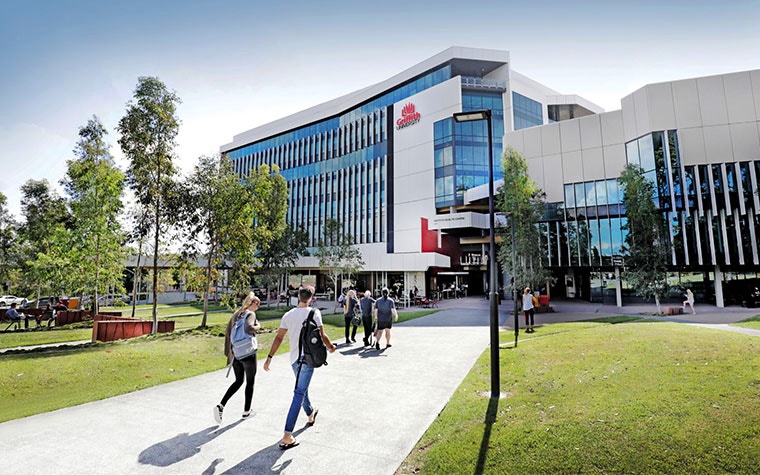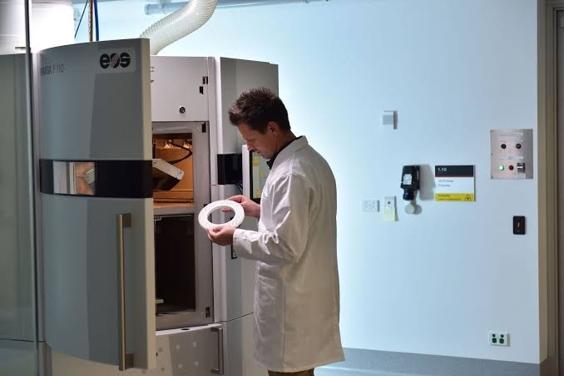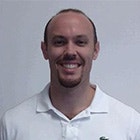
INTERVIEW
Griffith University's Approach to Personalized Care with End-to-End Digital Solutions
Griffith University's ADaPT (Advanced Design and Prototyping Technologies) Institute unites multidisciplinary experts and leading industry partners to engineer next-generation biomedical and industrial innovations. In this interview, we discuss ADaPT's achievements with members Stefanie Feih and David Saxby and learn how Materialise Mimics complements their mission.


Thanks for joining, David and Stefanie. Could you please start us off by explaining a bit more about ADaPT?
Stefanie: To me, the mission of ADaPT is to enable academics from various disciplines to think up innovative ideas and processes that enhance personalized care. I'm a mechanical engineer, and David comes from the health side, so these kinds of interactions are a perfect example of how various disciplines spanning science and health can work together. And I think facilitating this type of working environment is especially crucial in the medical device sector. It has led to fantastic breakthroughs. On top of that, we have an amazing opportunity to partner up with companies such as Materialise to put digital solutions into place. This initiative has enabled the design of personalized medical devices with fast turnarounds to improve patient outcomes.
David: To add to that, getting academics from different disciplines together is very important because often someone will specialize in a central component, but it's isolated. And it's maybe devoid of context. We get not only the academics together, but the end users as well — patients or clinicians who work with the products. And even manufacturers, in the case of Materialise. We all come together and bring our own perspectives on what's needed for the development of a product. ADaPT can provide end-to-end packaging, from ideation to prototypes to small-scale production for proof-of-concept, and then our manufacturing partners help us with scaling. And you can't forget about the education element. We're able to get really promising young students to work on those products and learn about industry needs and expectations all in one place.
“The surgeons identify patient needs, act on the implementation of our new technologies, and actually prove that they enhance patient outcomes. That is just brilliant to see.”
— Stefanie Feih
We've started to see a few of these types of organizations pop up throughout Australia. What is the benefit of having such an organization available in Queensland?
David: It's a great opportunity because we get a lot more information about the utilization of the products we design, and we can strategically build them to create impact. We partner with companies that know of a business opportunity in a certain area, and we pursue that. Or with clinicians who can tell us firsthand about the limitations they encounter. And from the perspective of our medical device partners, it's very beneficial to access this type of talent pool located in one place.
Stefanie: It's great to have surgeons on board, of which quite a few are also adjunct professors at Griffith. The surgeons identify patient needs, act on the implementation of our new technologies, and actually prove that they enhance patient outcomes. That is just brilliant to see. And it obviously motivates academics as well.
Can you share more about the commercialization process?
David: One of the big benefits of partnering with Materialise and accessing the commercial license for Mimics is that we're able to produce products for commercial use. We know that we have that stamp of approval in terms of regulation. This means that we can put together workflows in our quality management system (QMS) to deliver a quality medical product. We trust and rely on key components within the Materialise suite to make that possible. For example, we've designed digital surgeries and then manufactured the guides that translate that design into practice using Materialise software. And now we have a functioning commercial service for that within Australia.
What is your workflow like with Mimics?
Stefanie: We begin with a scan. Once the scanned model has been segmented, it either goes directly to the printer or needs numerical simulation where we can include boundary conditions like patient-specific muscular forces. All that comes into a numerical model to show how the printed part would behave. Throughout these various steps, there's a lot of transformation of files from one software program to the next; everything needs to be compatible. Establishing that approved workflow with software partners that are willing to work with us to make the process smoother and add functionality in software packages that enable us to automate tasks, for example, is absolutely critical. It's all about automation and reliability.
David: To give a real example, a research fellow from ADaPT, Associate Professor Chris Carty, manages the children's gait laboratory up in Brisbane. There's a multidisciplinary team up there that is looking into surgical interventions for children with developmental disorders that affect their skeletal maturation. Those procedures historically result in poor outcomes for 30% of cases, where the corrections do not correct the issue or still result in very undesirable outcomes.
Our feeling was that there are a number of ways we can improve this. One is through high-fidelity gait analysis to understand what the demands are on their body when the children move and couple that with digital twins to inform the surgical procedure. Surgeons can design based on this information and then precisely translate that design into practice.
That program has really come into its own in the last 10 years. And we use many of the capabilities within Mimics. We use Mimics Core for much of our raw processing of medical images like MRIs and CTs, and we use 3-matic if we need to take anatomical measurements and perform meshing operations. And finally, when we 3D print, we use Materialise Magics to send the instructions to our printers.
In your opinion, how does using Mimics prepare students for future careers?
David: Workflows and tools within the industry are always evolving, and traditional curricula and educational pathways are probably not meeting that demand. So when medical device companies hire new people, they need to invest in training them to fill that gap. Using tools like Mimics during education allows businesses to offset those training requirements as much as possible.


Credit: Griffith University
What do you both think are the most important needs for the continued growth of medical 3D printing and personalized care?
David: I'll say in a short phrase, regulation. And you know, that's multi-dimensional, but universities have to get up to industrial standard, otherwise, we'll be left behind. At ADaPT, we have the buy-in, and now it's just a question of how to do it.
Stefanie: I feel that there's a lot that aerospace and medical, for example, could share in terms of coming up with regulatory standards for 3D printing. But at the moment, obviously, industry sectors treat their products as very separate items — to some extent, rightly so, as requirements are different. But to another extent, I think it would really benefit us all if we merge that communication because the reliability of manufacturing processes is often not discipline-specific.
We also need to keep up with technological innovations. An additive manufacturing company might replace their 3D printing technology with new printer models every year — there are always new features coming out, allowing for more control over the process. Keeping up with that is a significant cost for any organization. So how do you adjust to that? And when do you make the decision to actually invest in new equipment? I think that is something really important — to keep up with the growth of 3D printing in the coming years.
ADaPT has already accomplished many great feats. What's next for the program?
David: One hurdle is getting ISO accreditations around our QMS. For example, how do we receive instructions from our clients? How do we ensure that messaging about orders or dimensions is preserved through the design steps? Exploring how to best complete these steps is something we're pursuing right now. It will be a great aspect to advertise to our industrial partners to encourage further investment because they will then have confidence they can rely on us as partners, but also that our research will be defendable from the perspective of a regulator.
Stefanie: We're also looking into getting cleanroom facilities. The hospital is across the road, so if we could complete the entire workflow in-house at the university, it would be a fantastic achievement. Beyond that, we're looking to expand into other 3D printing technologies. ADaPT currently has metal and polymer printing capabilities and a sufficiently large printing platform, but we also foresee ceramic implants entering the market. These materials are also biocompatible, and with new printers, we can get very high resolution. It will be a great asset for the dentistry space as well. Additive manufacturing is still very much a developing field. So we need to make sure we stay at the forefront. That also means that our current printers will be upgraded and expanded upon as needed.
Thank you to Stefanie and David for their time! We look forward to seeing what comes next from the ADaPT team.
L-102952-02
Share on:

Biography
Stefanie Feih

Biography
David Saxby
You might also like
Never miss a story like this. Get curated content delivered straight to your inbox.
